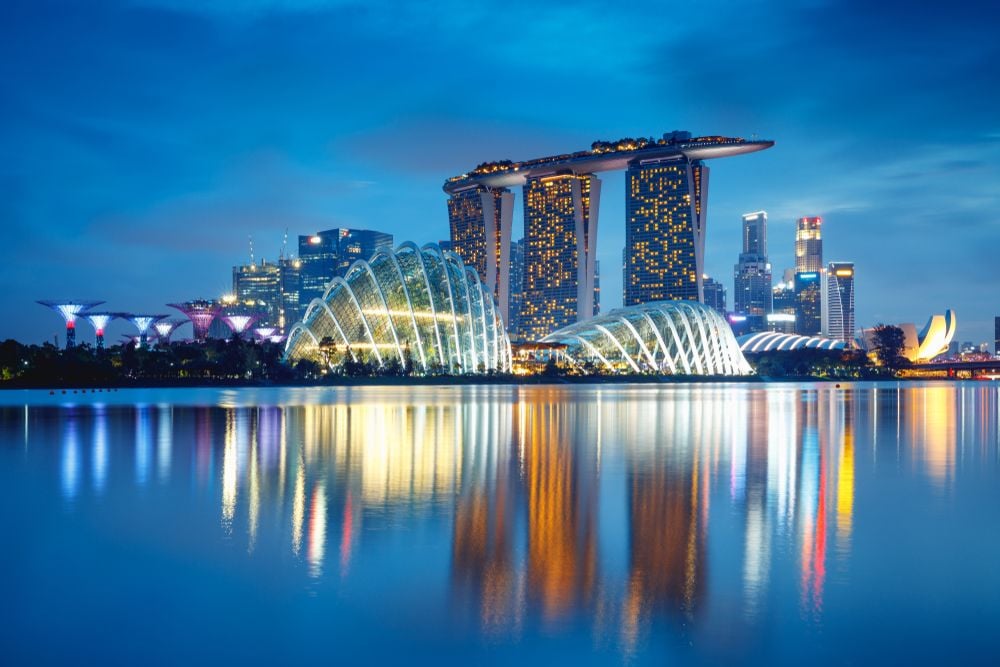Debt swaps are staging a comeback. They’re a decades-old tool but they’re once again raising vital funds for conservation and other environmental projects while reducing over-loaded debt stocks. They can play a big role in helping reduce the deep debt distress being experienced by over-leveraged developing country governments.
Covid and Russia’s war in Ukraine have created for many of the world’s poorest nations a toxic combination of food and energy security anxieties, shortages caused by supply-chain bottlenecks, rampant inflation, higher interest rates, slower growth, capital outflows, rising government deficits and depreciating currencies making foreign currency debt ever-less affordable. Several over-leveraged emerging market (EM) governments have been struggling with debt sustainability for years. Today’s deep debt distress calls for innovative thinking.
EM debt swaps are back big style. Official and public-private debt-relief initiatives will do most of the heavy lifting in reducing stretched debt sustainability. But tools like debt swaps can offer governments abundant additional opportunities. And by applying sustainability overlays, debt swaps can fund environmental, climate, conservation, biodiversity and other nature-based projects as well as themes such as education and healthcare.
The debt problem is significant. A recent UN Development Programme report (Avoiding ‘Too Little Too Late’ on International Debt Relief) identified 54 developing economies with severe debt problems. World Bank president David Malpass says the world’s poorest countries have annual bilateral debt-service commitments of US$62 billion. That’s a huge number. In fact, it’s almost five times the US$12.9 billion of debt-service suspension achieved by the 48 countries that participated in the G20’s Covid-era Debt Service Suspension Initiative (DSSI), which expired at the end of 2021.
On top of the DSSI, the International Monetary Fund was called on to provide about US$31 billion in emergency financing to 76 countries plus debt-service relief under its Catastrophe Containment and Relief Trust to the poorest countries. Even before the Covid crisis, the fund noted that about half of the low-income countries and several emerging market economies were already in or at high risk of a debt crisis.
Ghana, Lebanon, Sri Lanka, Suriname and Zambia are in default. Argentina, El Salvador, Pakistan and a whole bunch more are suffering grave debt adversities. Ethiopia, Ghana and Zambia are in debt-relief negotiations under the G20’s Common Framework for Debt Treatment (the programme that followed the DSSI). Chad came out of the framework with a deal in November 2022.
Enter debt-for-nature swaps
Sovereign debt swaps are catching on and could play a part in solving the debt nightmare. A number of deals have been done and more are in the pipeline.
Barbados completed a debt conversion last September backed by a US$100 million guarantee from the Inter-American Development Bank and a US$50 million guarantee from The Nature Conservancy that credit-enhanced a blue loan to buy back existing debt. The transaction cut the country’s borrowing costs; savings were allocated to finance a US$50 million long-term marine conservation programme over the next 15 years. Credit Suisse (CS) was global lead arranger; CIBC FirstCaribbean was domestic lead arranger of the blue loan. CS and CIBC were joint dealer-managers on the buyback of US$77.6 million of Barbados bonds at 92.25 of face value.
Belize closed a US$364 million debt-conversion blue bond in 2021, the first under The Nature Conservancy’s Blue Bonds for Conservation programme. CS was sole structurer and arranger of the bond. The US International Development Finance Corp provided a political risk insurance wrap. The Belizean government used proceeds of the bond to repurchase its US$533 million due 2034 bonds at a 45% discount to face value – with solid bondholder support. US$23.5 million was placed into an endowment fund that will set aside funding for marine conservation accessible from 2041. Over the next 20 years, around US$4 million will be paid annually into an independent conservation fund to finance marine and coastal conservation projects in the country.
In the pipeline
Several deals are in process. Cape Verde is working on a debt-for-nature swap of up to US$200 million, according to reports. The former Portuguese colony owes Portugal approximately €140 million (US$149.69 million). Lisbon said in January it would write off the debt if Cape Verde establishes a Climate and Environmental Fund.
Ecuador is working with Credit Suisse, the Pew Charitable Trusts, the Inter-American Development Bank and the US International Development Finance Corp on a debt-for-nature swap of up to US$800 million that could see a blue bond issued this year to fund conservation in the Galapagos and reduce external debt.
Sri Lanka is also reportedly open to factoring in some sort of debt-for-nature swap, with US$1 billion reported as the size they’re targeting. Zambia received a debt-for-nature swap outline last year from the World Wildlife Fund that could also make up to US$1 billion available for green projects, although the swap is not yet an official part of the country’s US$13 billion debt restructuring talks.
Other sovereigns reportedly interested in debt-for-nature swaps include Argentina, Colombia, Eswatini, Kenya and Pakistan.
Private debt swaps
Beyond the sovereign sector, the private sector can play a supplementary role. Debt swaps boomed in the 1980s and 1990s, after Mexico’s 1982 sovereign default set off a domino effect of doom that saw much of Latin America, Africa, the Soviet Union, some of the Iron Curtain countries of Eastern Europe and parts of Asia spiral into debt distress.
Between 1982 and 1986, US$4.5 billion of EM debt swaps were arranged (more than US$12 billion in today’s money), enabling investors to tender external debt bought at a heavily discounted price in return for local currency at much closer to face value that multinationals or local corporations used to fund operations on the ground, or investors used to make heavily discounted equity investments. That period saw not just debt-for-nature swaps (and spin-offs like debt-for-rhino swaps) but debt-for-pretty-much-anything-swaps, including debt-for-footballer swaps and debt-for-Guinness swaps.
Brazilian football legend Romário’s transfer from local club Vasco da Gama to Dutch club PSV Eindhoven in 1988 was financed using a debt swap. PSV mandated NMB Bank (a forerunner of ING) to buy heavily discounted Brazilian external sovereign debt in the secondary market and tender it to the central bank (at a much smaller discount) in local currency. The government cancelled the debt – at its face value – and the discounted local currency proceeds were channelled to Vasco da Gama.
Guinness used to part-fund its Lagos brewery via discounted Nigerian promissory notes that it tendered into the central bank’s monthly auctions. A host of other multinationals similarly discounted sovereign debt to fund local operations.
We risk spiralling into a new lost decade of debt standstills, debt relief, rescheduling and restructuring. Enterprising private sector operators and financial market participants can play a big role here in supplementing official initiatives.









